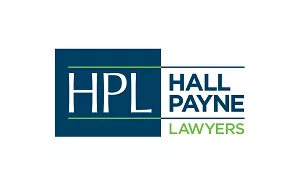- within Real Estate and Construction and Insurance topic(s)
- with Senior Company Executives, HR and Finance and Tax Executives
- with readers working within the Business & Consumer Services, Oil & Gas and Retail & Leisure industries
If you've been injured at work, there are a number of things you'll be attending to like seeking medical treatment, lodging a worker's compensation claim (WorkCover or Comcare), attending physio and so on. Taking care of these critical tasks may see you distracted about some of the crucial details surrounding your injury; date, time and place of the injury, precisely how it occurred, who you told etc. That's why we recommend that people who experience a workplace injury, keep a detailed diary for future reference.
Comcare appeal dismissed
In the 2022 AAT decision of Selman and TNT Australia Pty Ltd (Compensation ) [2022] AATA 2386, the Tribunal dismissed an appeal by an injured worker following rejection of his Comcare claim. The Tribunal Member noted he could not be satisfied (on the balance of probabilities) that the incident which the injured worker, Mr Selman described in his compensation application (and in the evidence he gave at the hearing) occurred.
In coming to that conclusion, the Senior Member (Member East) noted that Mr Selman was not able to provide any documentation which could 'corroborate' his version of the events which led to his workplace accident, causing his shoulder injury.
The Senior Member noted:
" .there is simply insufficient probative evidence to persuade me on the balance of probabilities that the mechanism of injury occurred as Mr Selman said it did."
Lack of contemporaneous notes or records
In deciding the case, the Tribunal also noted that there were no contemporaneous references (that is, notes taken or details recorded, in writing, at the time) in Mr Selman's GP's records, of him reporting the circumstances of the injury to his treating doctor. Also, his treating specialist was not able to say that Mr Selman mentioned to him that he (Mr Selman) thought it occurred at work, until after he lodged a Comcare worker's compensation claim some 4 months after the alleged work event occurred.
The Senior Member also preferred the evidence of a witness called by the Respondent, who was Mr Selman's supervisor at the time of the alleged injury. The supervisor was able to refer to an email he sent to another person in management, which did not make any reference to Mr Selman stating that his shoulder injury was due to a workplace accident.
Further, the Tribunal did not accept the submission made by Mr Selman's lawyer that some workers simply 'get on with things' and try to 'work through' an injury, but unfortunately find they can't and then look to make a claim for worker's compensation.
In not accepting that submission, the Senior Member again noted that whilst he certainly accepted that was the case, in this instance, there was not one piece of documentary evidence produced at the time of the alleged event at work, which 'corroborated' Mr Selman's version of the event which he said caused his injury. Had there been just one piece, then the case probably would have been decided differently.
Injured workers usually need to be able to provide corroborating evidence of their version of events
Whilst this is a decision by the AAT involving a rejected Comcare claim, the point which was the injured worker's undoing, is equally important for all worker's compensation claims; whether State-based WorkCover claims or federal Comcare claims.
If a worker's compensation claim is rejected and has to be decided by a separate body (whether a review body or a court), then the ability for the injured worker to provide 'evidence' to support the events surrounding how their injury occurred, is usually critically important to a successful claim.
If you're injured at work, keep a diary
One way to provide supporting evidence of the details leading up to and surrounding your workplace injury is to keep your own diary of what happened.
Whether it was a single event (like tripping and falling) or a series of events (such as constant bullying by a co-worker over a period of time, leading to a psychological injury/illness), keeping a diary of the relevant events can be the critical difference in being able to access worker's compensation down the track. Another step that can be helpful to support your claim is to send an email of what happened to someone you trust (or even to yourself!).
Finally, make sure you mention to your GP (or any other health practitioner you are seeing) about the event you think caused your injury. Whilst there's no guarantee that the doctor will record everything you say, at least you can say truthfully if asked down the track, that you definitely did raise it with the doctor. You should also keep raising it at every subsequent attendance for treatment of your injury.
Also, take the time to confirm with your partner, a family member or a good friend, that you have sought treatment for the workplace injury.
It's unfortunate that injured workers have to think of these things at a time when most simply want to get better and get on with life. However, sometimes we may not know we need to make a claim for worker's compensation until a point some months after the event. When that time arises, having these bits of corroborating evidence can be the difference between having a claim accepted and important benefits paid or having a claim rejected.
Download as PDFThe content of this article is intended to provide a general guide to the subject matter. Specialist advice should be sought about your specific circumstances.


